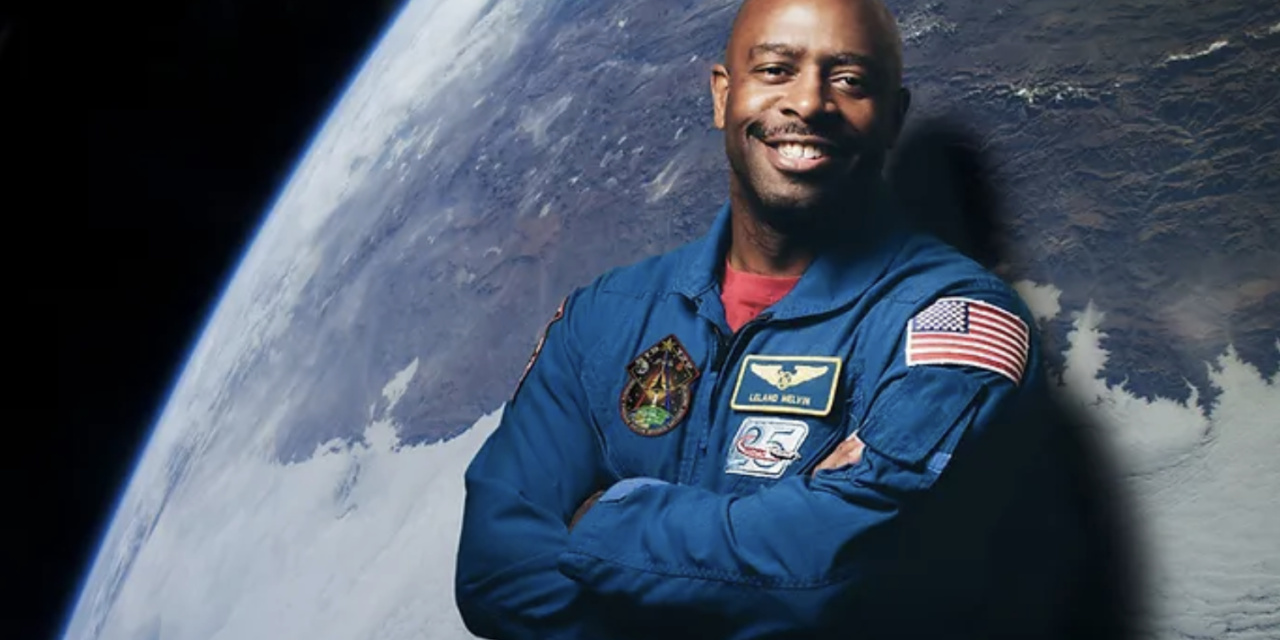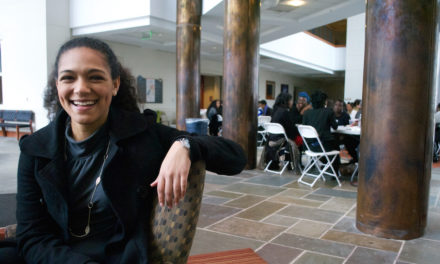Emory University hosted former National Football League wide receiver and NASA Associate Administrator for Education Leland Melvin as part of the annual Goodrich C. White Lecture on March 17. The event was virtually open to University community members and featured an audience Q&A portion. Titled “Chasing Space,” Melvin’s speech centered on his journey to outer space in February 2008 and the obstacles he faced. He said he hopes his story can inspire others to “come together for the survival of our civilization.”
Melvin attributed the start of his journey to former U.S. President John F. Kennedy’s 1961 goal of sending humans to the moon and back within the next decade. The same year, Martin Luther King Jr. consoled the Freedom Riders after they were attacked in the Deep South. Melvin noted that there was a juxtaposition between the beginning of the mission to the moon — one of the most technologically-advanced events at the time — and people fighting to secure their basic rights throughout the country.
A few years later, Melvin watched as Neil Armstrong took his first steps on the moon on July 21, 1969.
“I was five years old when the moon landing happened,” Melvin said. “I was the antenna engineer. I was holding the rabbit ears on the black and white Sylvania television set, so my parents and my sister could watch one small step for man live.”
However, Melvin noted that, though most of the children at the time were fantasizing about being Armstrong and Buzz Aldrin, he wanted to be professional tennis player Arthur Ashe Jr., who won three Grand Slam singles titles during the course of his career. Melvin said he was inspired by Robert Walter Johnson, who trained Ashe and was the first African-American physician to receive the right to practice medicine at Lynchburg General Hospital, where Melvin was born.
Throughout the lecture, Melvin referenced the children’s book “Curious George,” which his mother read to him as a child. He used the phrase “man or woman in a yellow hat” to describe people who helped him along his journey and encouraged his chase.
“Think about all the things that Curious George did where he got in trouble,” Melvin said. “He always had the man in the yellow hat who had his back.”
These “yellow hats” included his parents and his former high school football coach Jimmy Green, who he credits for his $180,000 football scholarship to the University of Richmond (Va.). During the football recruitment process, Melvin dropped a touchdown pass in front of a Richmond scout. Instead of taking him out of the game, Melvin said Green gave him a “second chance” and encouraged him to try again.
“I went from catching a pass at a homecoming game to now going to Richmond and can officially blow things up as a chemistry major,” Melvin said. “Incredible, right?”
Melvin graduated and was drafted by the Detroit Lions in 1986, but he pulled his hamstring shortly after and was later released from the team. He briefly played for the Canadian Football League’s Toronto Argonauts and signed with the Dallas Cowboys for the 1987 football season, but re-injured his hamstring, ending his football career.
Two years later, Melvin began working in the Nondestructive Evaluation Sciences Branch at the NASA Langley Research Center before being selected to be an astronaut in April 1998. He reported for training in August 1998 at the Sonny Carter Training Facility’s Neutral Buoyancy Laboratory in Houston.

Emory University hosted former National Football League wide receiver and NASA Associate Administrator for Education Leland Melvin as part of the annual Goodrich C. White Lecture on March 17. Courtesy of Emory University
During spacewalk training — where astronauts practice working in atmospheres resembling zero gravity by walking underwater — Melvin entered the pool without a key piece on his helmet meant to protect his ears from the pressure 20 feet underwater. When he got out of the pool, he was completely deaf. After undergoing emergency surgery, Melvin said he was told that he would never fly in space.
Despite this setback, he continued to work for NASA, hoping he would still be able to go to space. This was due in part to the encouragement of former NASA Administrator Daniel Goldin, another one of Melvin’s “men in a yellow hat.”
“NASA never gave up on Hubble, I will never give up on you,” Goldin said, according to Melvin. “I felt so inspired, and I was like we’re going to figure this out, it’s going to be OK.”
Goldin eventually regained some of his hearing back in his right ear. Although still considered medically disqualified, he stuck with NASA, educating children in the agency’s Educator Astronaut Program in Washington D.C.
Then, on his drive home from NASA’s headquarters on Feb. 3, 2003, he received a call from a staff member in the Program, telling him that NASA’s Space Shuttle Columbia was late to its expected landing time. The shuttle was destroyed as it returned to Earth, killing the seven astronauts on board, all of whom were Melvin’s friends. Among the astronauts was David Brown, a flight surgeon who had been working to get Melvin back to flight status.
When Melvin consoled Brown’s parents on the night of the accident, he said that Brown’s father encouraged him to continue his work with NASA.
“He says, my son is gone, there’s nothing you can do to bring him back,” Melvin said. “The biggest tragedy would be if we don’t continue to fly in space to honor their legacy. He’s already thinking about the legacy of his son and the crew and what we have to do to honor that, and I was shored up with so much emotion and resilience and grit to figure out how I’m going to fly in space to honor the legacy because I’m not medically qualified to fly.”
This conversation drove Melvin to figure out how to fly in space to honor that legacy, even though he still wasn’t medically qualified to fly.
Former NASA Chief Health and Medical Officer Richard Williams was Melvin’s “ultimate man in a yellow hat.” Williams, who was the head of all flight surgeons, told Melvin that he believed he could go to space, defying other “world-renowned” doctors and surgeons. Melvin later traveled back to Houston and was assigned his first mission to serve on board the Space Shuttle Atlantis in February 2008.
“One person is all it took to believe in me,” Melvin said.
Melvin boarded Space Shuttle Atlantis in February 2008 with the goal of installing the European Space Agency’s Columbus laboratory on the International Space Station.
As the shuttle arrived and first attached to the space station, Melvin said that he knew he was doing something “really powerful.” His crew was invited to the Russian segment of the space station to have a meal while orbiting Earth at 17,500 miles per hour and seeing sunrise and sunset every 45 minutes with people from Russia and Germany, nations that the U.S. used to fight against.
During their meal, the astronauts each took turns looking out at their hometowns, speculating about what their parents might be doing at that moment and listening to music together. Melvin described the cognitive shift he felt in that moment, known as the “overview effect.”
“You see everyone that was, is, and will be on planet Earth,” Melvin said. “We had this moment. It was so surreal. It changed my life.”
Melvin noted that even places with unrest seemed “tranquil and beautiful” from above.
“When you look at the planet at night, you see the footprint of humanity, you see sodium vapor lights, you see incandescent lights,” Melvin said. “You see all these lights, you see fires in places in places in Africa where people are convening, having a meal, telling stories that are beautiful and rich, to figure out how their kids will go to school or what they want to do with their lives.”
After his expedition, he returned to NASA to run their education programs. In building these programs, he said he focused on creating lessons that “spark passion” in children.
In closing, he reminded audience members to look toward the men or women in “yellow hats” in their lives.
“That’s what it takes, people doing things that are much bigger than their individual selves, doing it with their men and women in the yellow hat, believing in themselves and rising to that next level,” Melvin said.






